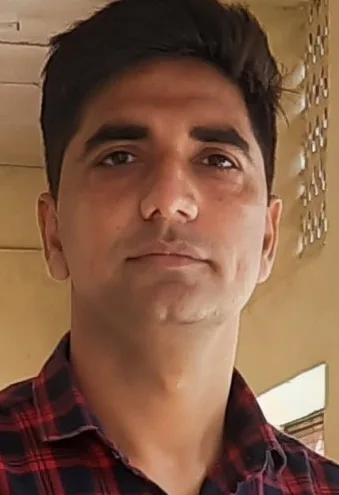Rituals have always shaped and regulated human shared understanding, as we are social beings, because of our ability to share meanings. They help individuals to set their goals and aspirations. Emile Durkheim observed that it’s a common ritual that keeps members of communities together. He believed they strengthen shared beliefs and social bonds. However, in a contemporary society, the institution of the market created rituals.
Market-based rituals associated with shopping, fashion, beauty routines, and leisure have become subtle forms of violence. These rituals do not cause direct physical harm, but they cause hidden damage to our ecology, individual mindset, and social fabric. This damage affects everyone, whether they participate actively or just observe.
Shopping has evolved from a need-based activity into a means of expressing identity and finding inclusion. Entering a mall, filling shopping carts, and unboxing deliveries have become a daily routine that shows belonging to consumer culture. Yet these actions hide harm. The rise in plastic packaging, single-use bags, and delivery boxes leads to widespread environmental harm.
According to a study by Oceana, around 164,000 tonnes of plastic packaging waste from e-commerce are generated annually, significantly contributing to global pollution. Convenience is celebrated as freedom, but it disguises slow, invisible damage that seeps into rivers, oceans, and even human bodies as microplastics.
Fashion plays a similar role. The identity of people in a modern society is often linked with their appearance, and the fast fashion industry takes advantage of this relationship. This correlation gives birth to fast fashion, and the fabric of the majority of clothes that represent the fast fashion is manufactured from polyester, a cheap but environmentally harmful petroleum-based material.
When people wash polyester items, microfibres enter our water systems, and discarded clothes pile up in landfills that will last for generations. Although fashion is marketed as a form of self-expression, it often creates anxiety, dissatisfaction, and a need for constant comparison. What appears to be choice and individuality can be little more than another system of self-surveillance, which means that fear of not being in style becomes pressure to consume indefinitely.
In this context, ‘violence’ refers to the subtle yet pervasive harm inflicted not through direct physical aggression, but through environmental degradation, psychological strain, and cultural coercion. It reflects the way societal norms and industry practices, particularly in consumer habits, exact a toll on individuals and ecosystems.
Beauty rituals also play a role in the cycle of everyday violence. While skincare routines, makeup kits, salon appointments, and workouts may appear to be acts of self-care, they often serve as tools of social control that promote nearly inhumane standards of perfection. Products containing harmful chemicals can damage the body; plastic waste harms the environment; and the relentless pursuit of beauty negatively impacts our emotional and mental health. The body, which should be viewed as something natural, instead becomes a project shaped by market demands and media influences, designed to create a specific image.
Even leisure activities partake in these violent expressions. Malls, disposable cups of coffee, selfies with drinks and logos, and air conditioning on the weekend are not harmless; they exist in collaboration with consumer markets. Leisure takes on consumption, and friendship is commodified through the selection of the cafe, the drinks, and the labels that we publicly share. Every act of leisure in this form implicitly supports social and environmental harm and distributes the effects of violence beyond private choice.
These violent rituals are insidious because of the unseen harm caused. They destroy environment, put stress on our bodies, wear down mental capacity, and exacerbate social inequalities. The waste and pollution impact some communities more than others, but the consumption and leisure aspects are mostly directed toward the middle and higher classes.
Unlike traditional violence, which has a victim and an offender, in these violent rituals, all are victims. The perpetrator of environmental issues can be anyone from consumers of polyester clothing to bystanders breathing in polluted air, and even future generations who will face the consequences of landfills. One does not have to be actively involved to feel the impact; we are all both contributors to and victims of this violence.
The modern ritual of everyday life is therefore a contradiction. It provides identity, joy, and social belonging, yet simultaneously results in harm on several levels. The markets of consumption, fashion, beauty, and leisure foster a muted brand of ecological, psychological, and social violence against ordinary people that is normalized through repetition and comfort. “Ordinary” becomes political, and the usual act of buying clothes, putting on makeup or how we decide to spend our precious free time carries weighty implications.
Conceptualizing these as violent rituals leads to a re-examination of everyday life. It encourages us to understand how we contribute to ecological degradation, bodily harm, and social stratification in our daily lives. It also encourages us to think about alternatives that can create identity, belonging, and joy without harm, such as participating in sustainable clothing practices, saying no to the throwaway culture, taking leisure in public and natural places, and participating in forms of beauty practice that celebrate the body rather than controlling it.
In this way, the sociology of everyday life is vital to understanding contemporary violence. Not all violence is visible, and not all harm is immediate. Much of the significant destruction occurs within rituals we perform every day, often unnoticed. By recognizing the weight of market based daily rituals, we can no longer dismiss their consequences as harmless.
Acknowledging our shared responsibility challenges us to rethink, resist, and ultimately transform the rituals that define our lives. The future depends on whether we simply follow these patterns or consciously choose new practices rooted in care for ourselves, each other, and the planet.
(Author is an Assistant Professor at UILS, Chandigarh University, Punjab. Feedback: [email protected])






